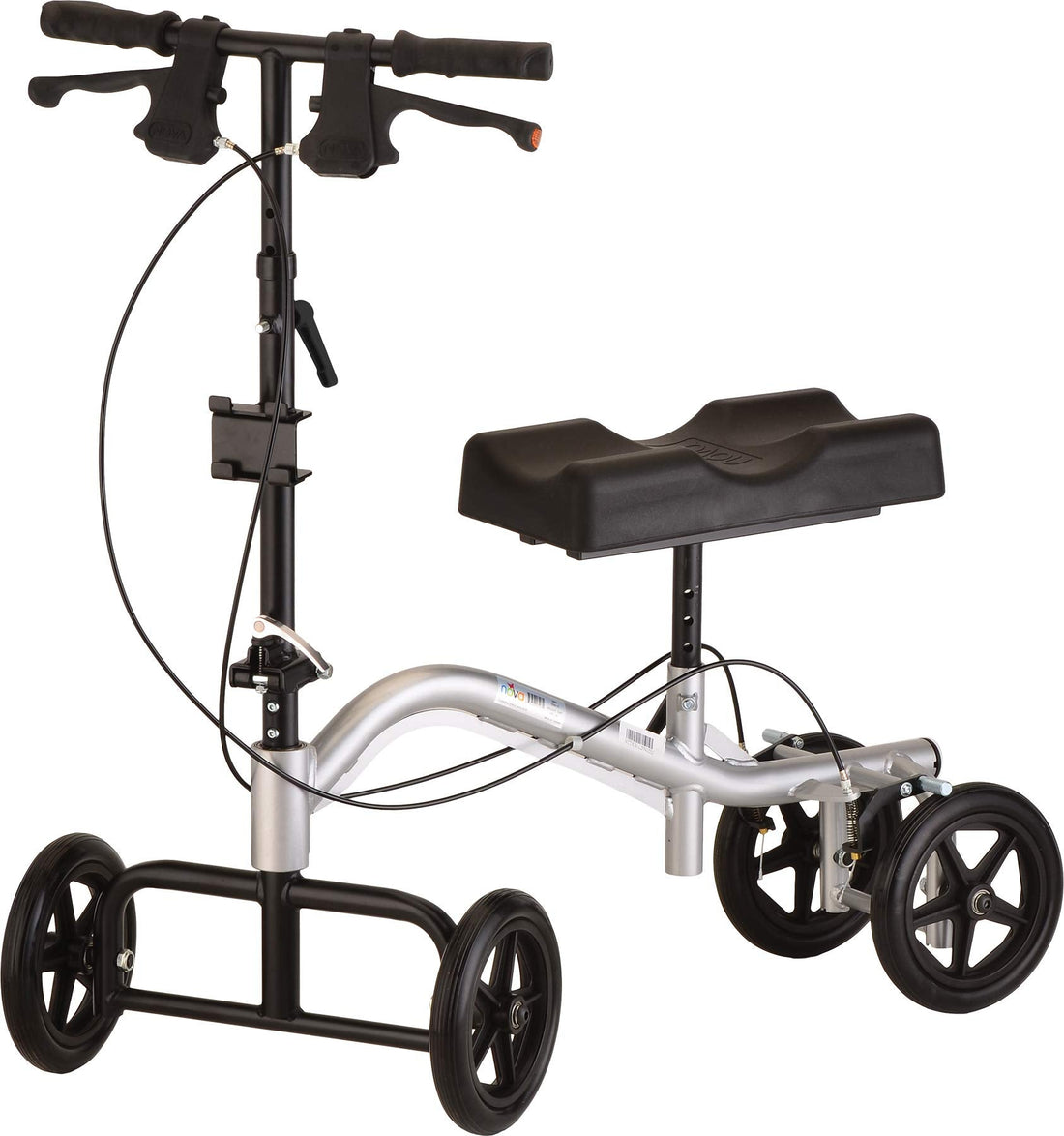
How Knee Walkers Help You After a Leg Injury?
Share
Recovering from a below-the-knee injury can feel like your world suddenly slows down. Suddenly, simple things like walking to the kitchen or running errands turn into big challenges. But staying mobile doesn’t have to mean struggling with crutches or relying on others constantly.
There are tools and strategies that make moving around easier, safer, and even a little fun. In this guide, we’ll talk about the challenges of recovery, how to stay active, and how mobility aids can help you regain independence while keeping your injured leg safe.
What Challenges Do People Face After a Below-the-Knee Injury?
So, what’s the real struggle after a lower-leg injury? First, there’s balance. When one leg is out of commission, suddenly your whole body feels unsteady. Walking with crutches can strain your arms, shoulders, and back, making everyday movement exhausting.
Tight spaces, stairs, or uneven surfaces? Forget about it. Even just getting from one room to another can feel like a workout. Add to that the frustration of depending on others for help, and it’s easy to see why staying mobile becomes a top priority.
How Can a Knee Walker Help During Recovery?
Have you ever wondered if there’s a way to glide through your day without relying on crutches? That’s where a knee walker comes in. A walker from the right lets you rest your injured leg comfortably on a padded platform while you scoot along using your good leg.
No more overworking your arms, no more wobbling, no more awkward hopping. Whether indoors or out, a knee walker keeps you moving efficiently and safely, giving you the freedom to handle errands, chores, or even a stroll outside. It’s about keeping independence, confidence, and comfort intact.
What Features Should You Look for in a Knee Walker?
Not all knee walkers for sale are created equal. When choosing one, consider a few key things:
-
Adjustable Knee Pad and Handle: Everyone’s leg length and arm height are different. Having adjustments ensures your injured leg is properly supported, and you’re not straining anywhere else. Comfort matters more than you think.
-
Front Axle Adjustability: The turning radius makes navigating tight corners or narrow hallways much easier. Some walkers even let you expand or contract the wheels to suit your space.
-
Lightweight and Foldable Frame: Moving it around or storing it shouldn’t be a chore. A lightweight frame that folds easily saves space and makes transport simple.
- Brakes and Safety Features: Dual rear brakes give you control and prevent accidents. Safety first, especially when your focus might be on balancing instead of maneuvering.
How Do You Use a Knee Walker Safely?
Using a knee walker from the right medical supply store salt lake city utah might feel challenging at first, but it’s easier than it seems. Start slowly on flat surfaces until you’re comfortable. Keep your back straight and your arms relaxed. Avoid sudden turns or sharp movements until you’re confident with the balance.
For tighter spaces, adjust the wheels if your walker has that feature, and remember that most knee walkers are reversible for either leg. Practicing in a safe environment first can make all the difference in confidence and mobility.
What Other Tips Can Help With Recovery?
Mobility aids are just one part of the recovery equation. Pairing them with physical therapy can speed up healing and prevent secondary injuries. Keep your injured leg elevated when resting, it reduces swelling and supports circulation.
Check your knee pad and handle regularly for comfort; minor adjustments can save big aches later. Small tweaks and mindful movement go a long way in keeping you mobile without setbacks.
How Does a Knee Walker Improve Daily Life?
You might be wondering, “Can it really make a difference?” Absolutely. Imagine running errands without dragging crutches behind you, or moving from room to room with ease. Built-in storage baskets add convenience for carrying personal items, groceries, or even your water bottle.
Most importantly, using a knee walker reduces dependence on others, giving you back a sense of freedom and control during recovery. It’s about more than movement, it’s about keeping your life as normal as possible while healing.
Conclusion
So, when you’re facing a below-the-knee injury, staying mobile doesn’t have to feel impossible. The right tools, like a knee walker for sale, combined with careful use and attention to comfort, can make a huge difference in your recovery.
Adjust the height, test your turning radius, and keep safety in mind, and suddenly, daily tasks become manageable again. The key is proactive planning, don’t wait until you’re frustrated or injured further. A little preparation now ensures independence, comfort, and peace of mind while your leg heals.
FAQs
Can I use a knee walker on stairs?
Not typically, most knee walkers are for flat surfaces. Check your device specifications and use caution.
How do I choose the right height?
Your knee should rest comfortably on the pad, and your arms should bend slightly when holding the handles. Adjust as needed.
Can it completely replace crutches?
For many, yes, especially for mobility around home and errands, but consult your doctor for long-term use.
